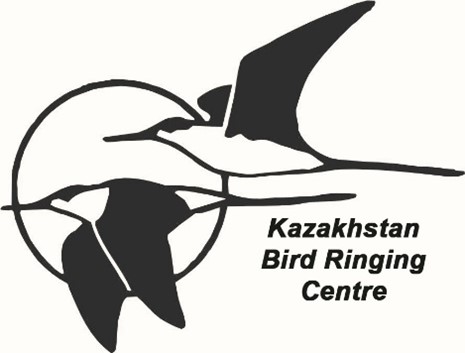
Kazakhstan
Bird ringing in Kazakhstan dates back to 1926 and reached its maximum development in the 1970s and 1980s. Employees of the Institute of Zoology, some nature reserves, the Ural Anti-Plague Station, students and birdwatchers took part in bird ringing. In the 1980s they began to create electronic databases.
To date, more than 2 million 300 thousand birds of 402 species of birds have been ringed on the territory of Kazakhstan. Unfortunately, the marking data for 1926-1950 is not included in the database because it was lost. The largest numbers of birds (98.9%) were tagged at ornithological stations and at nesting colonies. Around 70.8% of the total number of birds ringed in Kazakhstan have been marked in the foothills of the Western Tien Shan at the Shakpak Pass, which once again emphasizes the uniqueness and significance of this place for studying the migrations of terrestrial species. A significant number of shorebirds were tagged on the Sorbulak lake system (8.0%), in the Alakol-Sasykkol depression (5.3%), and in the Korgalzhinsky Reserve (3.2%).
We have received over 12,000 ring recoveries from the area between 20 W to 1160 E longitude and 740 N to 340 S latitude. To date, birds ringed in Kazakhstan have been encountered in 59 countries. The largest numbers were recorded from Kazakhstan (67.0%), Russia (14%) and Uzbekistan (7.6%). Substantial numbers of returns were also received from Kyrgyzstan (2.1%), Turkmenistan (1.5%), Iran (1.4%), India (1.3%) and Tajikistan (1.1%).
In addition, 1977 individuals of 83 species tagged in 33 states were encountered in Kazakhstan. The vast majority of them were ringed in Russia (51.0%) and India (30.4%), as well as in Kyrgyzstan (6.2%), the Netherlands (3.1%), Great Britain (1.4%), Turkmenistan (1.3%) and Iran (1.2%). Thus up to the present time geographical links between the birds of our republic and 65 other countries have been established.
On the territory of Kazakhstan, migration routes intersect, linking bird nesting sites covering Central Asia and reaching north to Eastern Europe and Central Siberia, with their wintering grounds in the southern half of Eurasia and Africa.
Further information on the Chopak Ornithological Station can be found on their website (English version via Google Translate).
Contact the scheme: aegavrilov@bk.ru